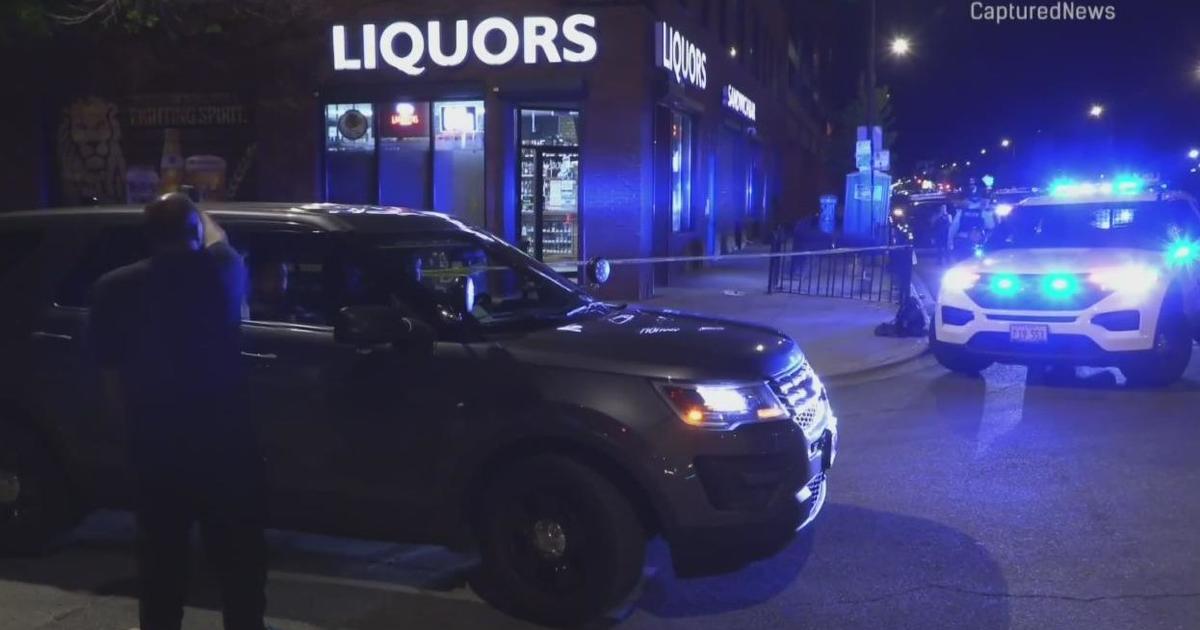Coyote reports are up in Chicago this year, with Lincoln Park seeing more than any other community
CHICAGO (CBS) -- It's coyote season in Chicago – we always see more of them during the winter months.
But with coyote reports up this year, we wanted to know what's going on and where most are being spotted.
As CBS 2's Tara Molina reported Monday, the answer to that query is Lincoln Park – the community area adjacent to the largest expanse of the lakefront park of the same name, bounded by Diversey Parkway on the north, North Avenue on the south, Lake Michigan on the east, and the North Branch of the Chicago River on the west.
Lincoln Park has logged the most coyote interactions this year by far – with 124. Interactions can be anything from sightings to reported issues.
And with reports up, we asked the city's expert why.
Coyotes are often spotted prowling and howling around the city. They're the urban animal we see most in the winter.
Coyotes typically keep to themselves, and away from us. But every once in a while, there is a memorable coyote moment.
On April 3, 2007, a coyote sauntered into a Quiznos sub shop at 37 E. Adams St. downtown. The animal was forcibly removed by Chiacgo Animal Care and Control – but was returned to the wild the next day, with the Quiznos workers there to see him off.
More recently, 2020 was the unofficial year of the coyote in Chicago. In January – a couple of months before the COVID-19 pandemic came to define the year and disrupt day-to-day life – coyotes made headline after headline as they ventured around the city.
Coyotes were seen downtown – in the Loop and off the Magnificent Mile. But they made headlines in particular that month on the streets of the North Side, from Lincoln Park to Old Town and the old Cabrini-Green area.
Most infamously, a coyote that bit a 6-year-old boy in the park of Lincoln Park earlier near the Peggy Notebaert Nature Museum. The animal repeatedly bit the child on the head.
The boy was running up the hill when the coyote attacked, then-Ald. Michele Smith (43rd) said at the time. The boy may have accidentally gotten too close to the animal, Smith said the day after the attack.
The animal was later located, and at the time, officials said it was placed in a "permanent educational setting."
A less severe bite on the behind was reported by a man, and two dog attacks by coyotes were also reported in the same timeframe.
"We take those coyote calls very seriously," said Chicago Animal Care and Control executive director Mamadou Diakhate.
Diakhate says the last time they had to catch a Chicago coyote. There have been no serious incidents since.
"Just basically, leave them alone and they'll leave you alone," he said.
So far, in 2022, we've tracked 1,359 coyote interactions in Chicago - up from 1,137 last year - that were reported to 311. There have been 79 interactions so far in the month of December.
Animal Care and Control explained that an interaction could be any of the following:
"An interaction can be any of the following:
"Observation: Signs of a coyote are present, but a coyote may not be physically or visibly present
"Sighting: Coyote is visibly observed by an individual during any time of the day or night
"Encounter: A direct meeting between a human and a coyote(s) with no physical contact made
"Incident: A conflict between a human and a coyote where the coyote demonstrates any number of these threatening characteristics: growling, teeth baring, lunging, raised back fur, nipping, making contact and/or other displays of visibly threatening behavior – but where the human is not bitten
"Human attack: A human is bitten by a coyote or multiple coyotes and can either be:
· Provoked: The human involved has encouraged the coyote to engage (i.e. hand fed, approached coyote with pups, or intervened in a coyote attack on a pet)
· Unprovoked: The human involved does not engage with the coyote or encourage a direct physical encounter
"Pet Attack: Coyote injures or kills a domestic pet that is either:
· Attended: Pet is leashed and is within six feet of a person
· Unattended: Pet is roaming free, off leash, and is more than six feet from a person."
Animal Care and Control gets involved anytime 311 is in action.
Mapping them out, Lincoln Park stands out with so many more reports than any other community area. Diakhate said it could be because of green space and parks in the area, access to the lake, or because people in the community here are familiar with the 2020 incident and are more likely to report sightings.
He said the public needs to be aware as sightings tick back up this winter – a time when we see coyotes more often because more coyotes are out looking for food.
"Although urban coyotes are primarily active during dawn and dusk in order to avoid human interactions, the winter season presents challenges to a coyote's typical routine," Animal Care and Control explained. "Because their main food sources such as rodents and wild vegetation are harder to come by in winter, coyotes may expend extra energy to locate food sources elsewhere. Sometimes, the search for food leads a normally wary coyote to try their luck in our neighborhoods."
Diakhate said you should keep your dogs and kids close.
"Coyotes see anything that's small - a small dog, even kids - as food," Diakhate said.
Animal Care and Control said emphasized again that coyote attacks are rare and do not tend to be unprovoked.
"These events are often precipitated by inappropriate contact with humans, such as both intentional and unintentional human feeding," Animal Care and Control said.
For the Chicago Coyote Management Plan, follow this link.




